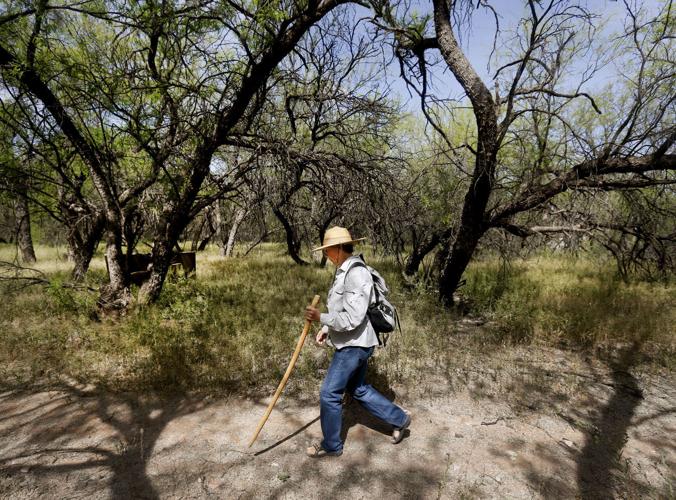BENSON — The Benson City Council gave its first stamp of approval Monday night to the planned Villages of Vigneto project in the Whetstone Mountains, despite concerns from a packed house that the development threatened the area's water supplies and the fragile San Pedro River.
The council voted 6-1 to approve a preliminary development plan for the 28,000-home development, which someday could play host to about 70,000 people. Councilman Patrick Boyle cast the only "no" vote.
The development would lie in the Whetstone Mountains, straddling State Hwy. 90 that heads south at that point from Interstate 10 toward Kartchner Caverns and ultimately, Sierra Vista.
The project's 12,300 acres already has zoning for a 60,000-home project, but the developer has said that the company doesn't want to build something that big and that it's proposing to build something much more cohesive than the earlier plan. Council members praised this project and the developer as the best that Benson has ever seen.
But opponents said the City Council should hold off on the new plan until more studies can be done of the region's water supplies.
The developer, El Dorado Holdings of Phoenix, plans to submit a final development plan to the city in 30 to 45 days, and to start construction of the project in early 2016, said Mike Reinbold, a partner in the company, after the council meeting. The first homes should be ready for occupancy in late 2017 or early 2018, he has said.
But during the meeting, eight speakers out of a crowd of about 100 people criticized the project and warned that the region's water supplies weren't limitless. While the Arizona Department of Water Resources has certified that the project has an adequate water supply for 100 years, speakers denounced that thinking as speculative. All eight speakers were from outside Benson, including Tucson, St. David, Cascabel and Sierra Vista.
"The idea that the developer can guarantee a 100-year water supply is pure fiction," said one speaker, Robert Blanchette, of nearby St. David. "No one can predicted future rainfall. Arizona has been in an extended 15 year drought. No one predicted it. We don't have a CAP canal or a lake or a river that runs consistently to tap into once groundwater runs dry."
Les Corey, a longtime Tucson conservationist and professional ecologist, said in a statement read to the City Council that it's critical that the community obtain a more complete picture of the development's likely impacts on Benson and the middle San Pedro River basin.
"Water is life in the desert, and without it, your community will not thrive in the ways that you and your residents desire," said Corey, whose statement was read by Anna Lands of the rural Cascabel community north of Benson.
After the meeting, Mayor Toney King pledged that the city will keep a close eye on the project's water impacts, and said, "If it comes to the point where they say the water is in jeopardy, if we have to put a stop to it, we will."
"I feel that over the years, we have a lot of water studies that have been done for previous developments," King said in an interview. "I feel confident, from what I've been told over years of study, that we do have water."
The developer has taken precautions to save the water, and not use it "fruitlessly," said King, now in his third term as Benson's mayor on top of three more terms on the City Council."They'll be very positive about their use of water."
If an upcoming U.S. Geological Survey report or other future reports raise red flags about the water supply, "I'd have to see it" before reacting, King said.
Blanchette laughed afterward, when told of the mayor's assurance that the development would stop if water supplies proved inadequate.
"When has a developer ever stopped anything?" Blanchette asked. "He's in it for making money."
Norm Meader, a Tucson resident and Cascabel landowner, said the city and the developer need to monitor groundwater levels as the development proceeds and minimize water use through the use of efficient appliances, home furnishings and landscaping. The city also needs to use computer model studies to show how groundwater levels will decline over time, and maximize the amount of groundwater recharge and water harvesting that occurs.
"We want to slow that runoff down as much as possible with structures so that water will sink in rather than flow away," Meader said.





